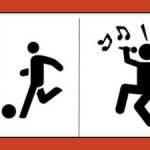
Family Strengths: Game Night is a great way to teach your students about components that make up a strong family! Not only does it get the entire class involved, but it’s a lot of fun! While many students may have grown up with a night set aside for games, many don’t get this opportunity for “community” in their own homes so this exposes them to it as well as a variety of board games that have them communicating, collaborating, thinking, practicing patience and good sportsmanship among others. It’s also a great lesson to do around the holidays as it is a pretty low prep lesson on your part, but engaging enough to keep students interested.




